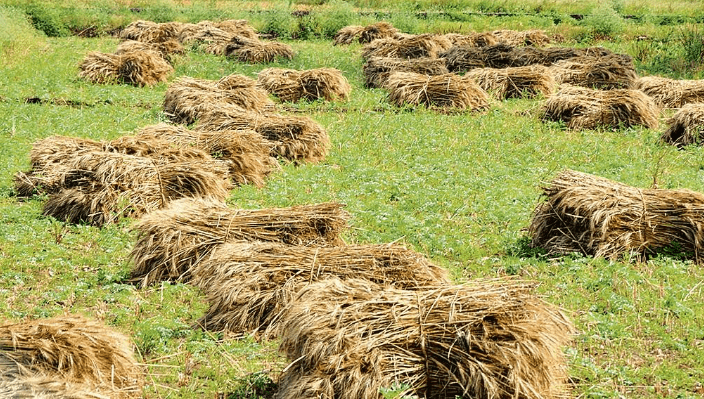Cows and buffaloes are renowned for their milk production capabilities. These gentle giants are vegetarians and ruminants, meaning they possess a unique ability to digest plant leaves and stems. Their diet primarily consists of green grass (also known as green fodder) and a portion of dry fodder. By ensuring these animals are well-fed, farmers can expect an optimal milk yield.




To achieve this, every farmer should allocate a portion of their land for cultivating green grass. It’s also vital to provide dry fodder for proper digestion. Green fodder is particularly crucial as it contains essential vitamins like Vitamin-A, which plays a significant role in reproductive capacity, growth, and milk production.
There are two primary types of green fodder: legumes (such as lentils, peas, and soya beans) and non-legumes (including corn, wheat, and various cereals). Legume green fodder is high in protein content and aids in body building, while non-legumes provide energy. To ensure balanced nutrition for cattle, both types should be included in their diet, with legume green fodder constituting half of the non-legume types. Fortunately, legume green fodder is a cost-effective alternative to feed. However, if legume green fodder isn’t readily available, feed can be used, though it may increase expenses.
Typically, cows and buffaloes require approximately 35-40 kilograms of green fodder daily. Adequate supply should be guaranteed well in advance. So farmer need to allocate some portion of land for this. When cultivating green fodder, consider factors such as rapid growth, high yield, palatability for cattle, absence of toxins, low water requirements, pest resistance, and the ability to store it for an extended period after harvest.
Green fodder is incredibly nutritious. However, it can only be cultivated in areas with a sufficient water supply, making it unavailable throughout the year. In such cases, farmers must rely on dry fodder, which is less nutritious. But there are methods to enhance the nutritional value of dry fodder.
Natural Methods:
Soaking dry fodder in water for about three hours before feeding removes dust and roughness while washing away any toxins. Cutting the fodder into smaller pieces is beneficial, as it increases the surface area exposed to microbes. This, in turn, aids digestion and may lead to an increase in milk butter content.
Chemical Methods:
One chemical method involves soaking dry fodder in a 2-4 percent solution of sodium or calcium hydroxide. Drying the treated fodder before feeding not only increases its consumption but also improves its nutritional value.
Another chemical approach is to create a urea solution by mixing 4 kg of urea in 60 liters of water and sprinkling it on 100 kg of dry fodder. The grass is then layered, sprayed with the urea solution, and compacted in cement beds or airtight tanks, covered with tarpaulin or polythene bags. After about 15 days, this treated grass can be fed to cattle. This method increases the digestible protein content of urea-treated grass from zero to 4 percent, making it more palatable to cattle.


Other Chemical Methods:
Cutting the fodder into small pieces and fertilizing it with urea solution not only increases its protein content but also enhances microbial activity, aiding in digestion.
Biological Control Methods:
Dry fodder with a high fiber content contains lignin, which is challenging to digest. To improve digestion, consider adding an enzyme isolated from the white rot fungus, a biocontrol agent, to the feed. This simple addition can greatly enhance the digestibility of the fodder.
In conclusion, the key to maximizing milk production in cows and buffaloes lies in their nutrition. By providing a balanced diet of green and dry fodder, and employing natural, chemical, or biological methods to enhance dry fodder quality, farmers can ensure healthy, contented animals and a consistent milk supply throughout the year.
